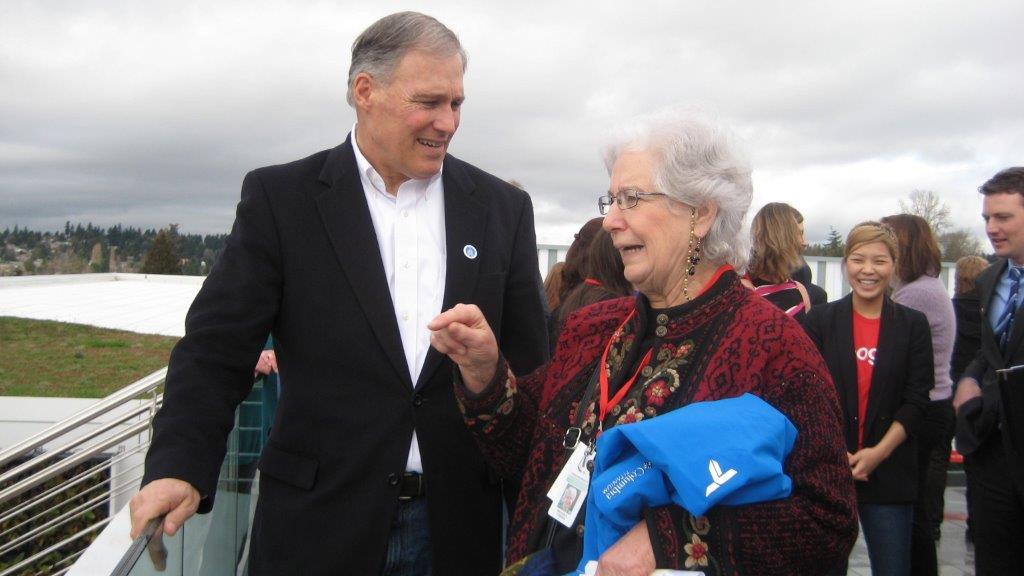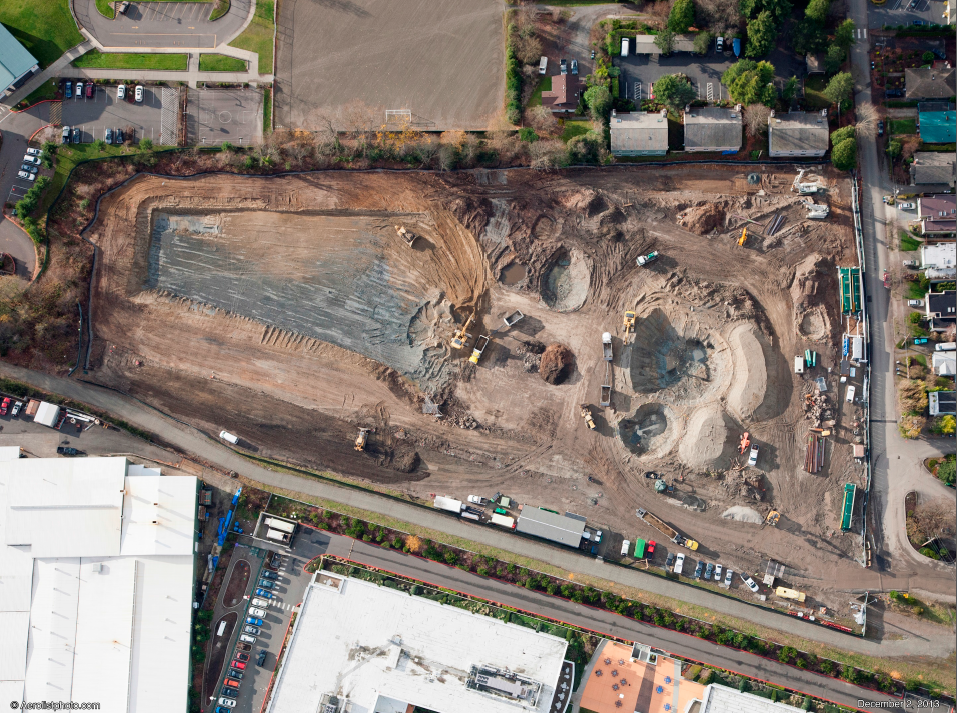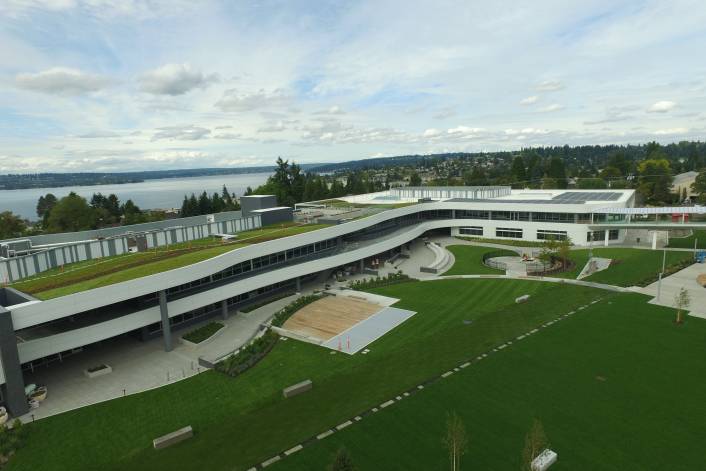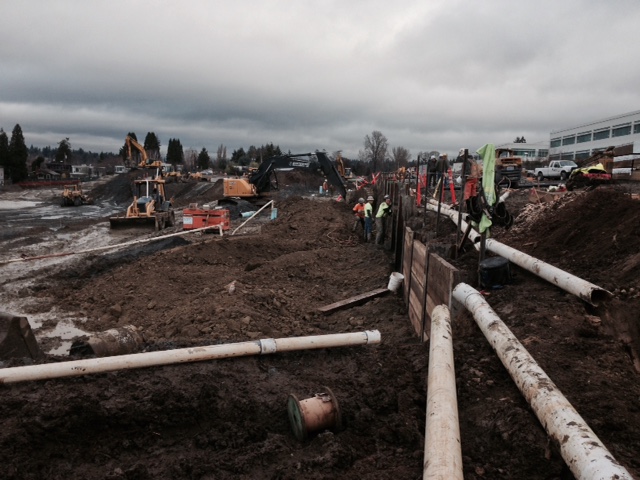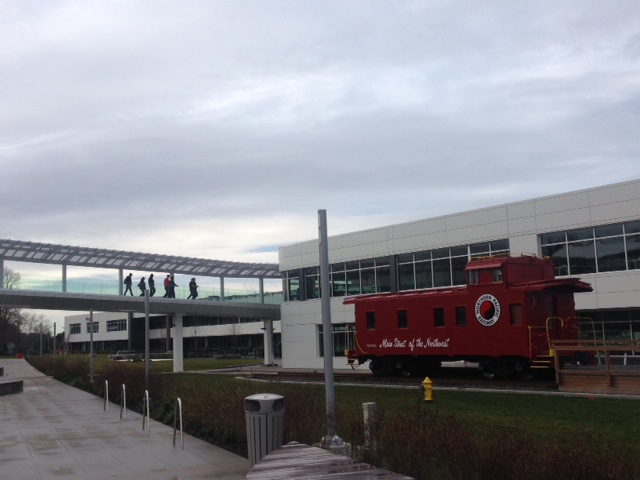Update (Feb 16, 2016):
Governor Jay Inslee mentioned the site's upcoming removal from the state's Hazardous Sites List in remarks today at Google's celebration of its Kirkland office expansion.
Ecology cleanup site manager Maura O'Brien briefed the Governor on the site's cleanup achievements (photo, left).
Original post (Feb. 11, 2016):
Google Inc. will dedicate new offices next week in Kirkland, and the building rests on the most solid environmental foundations possible.
Constructed by SRMKII, LLC to meet criteria for the U.S. Green Building Council’s LEED Platinum certification, the Google Kirkland Project features an additional, unique environmental dimension.
The structure occupies a formerly contaminated site. A chemical company operated a mixing and packaging facility there from 1971 to 1990. The five-acre site contained petroleum hydrocarbons, semi-volatile organic compounds, and chlorinated solvents in its soil and groundwater.
The former owner began and the current owner completed work to clean up contaminated soil and water in 2012. The cleanup required two additional years of monitoring after the soils were removed, and before Ecology could confirm that the site met state cleanup standards.
An extraordinary proposition
SRM Development's Google Kirkland Project, Phase II
“Google’s request speaks volumes about their commitment to the environment and the health and safety of their employees and community,” Tomson said. “We felt thrilled to take it on, and saw that Ecology shared this excitement.”
Ecology and SRMKII got busy. The developer planned to start excavation for the foundation and parking garage in late 2013. That would be the time to also dig out what we started to call “gray soil.”
“All I could think was, ‘Yes! Why not?’ There’s a first time for everything,” said Maura O’Brien, Ecology’s site manager who had overseen the property’s already successful regular cleanup. “It takes a voluntary willingness to invest in this level of cleanup, but there’s no technical bar to what they wanted to do.”
From good to best
Excavation for Google II, with Google I in the background.
In other words, SRMKII and Google wanted to make the site cleaner than “clean,” under Ecology’s oversight.
Ecology and SRMKII had data that showed where low but detectable contamination remained. As the excavation began, these areas would get special handling. Contractors collected “gray soil” for proper disposal, then tested the remaining soil to confirm that all detectable contamination had been removed.
The excavation and cleanup proceeded on time. And by late 2015 SMRKII sent Ecology the last of the groundwater monitoring reports needed to confirm a successful cleanup. The monitoring wells were decommissioned in January 2016.
Hazardous site no more
Meanwhile, in December 2015, we proposed to formally end the property’s status as a cleanup site. And that’s about to happen.
Google Kirkland Project has many environmental features, including rainwater catchment for flushing toilets and irrigation, a solar farm and a green roof. And it all rests on the best possible environmental underpinnings.


